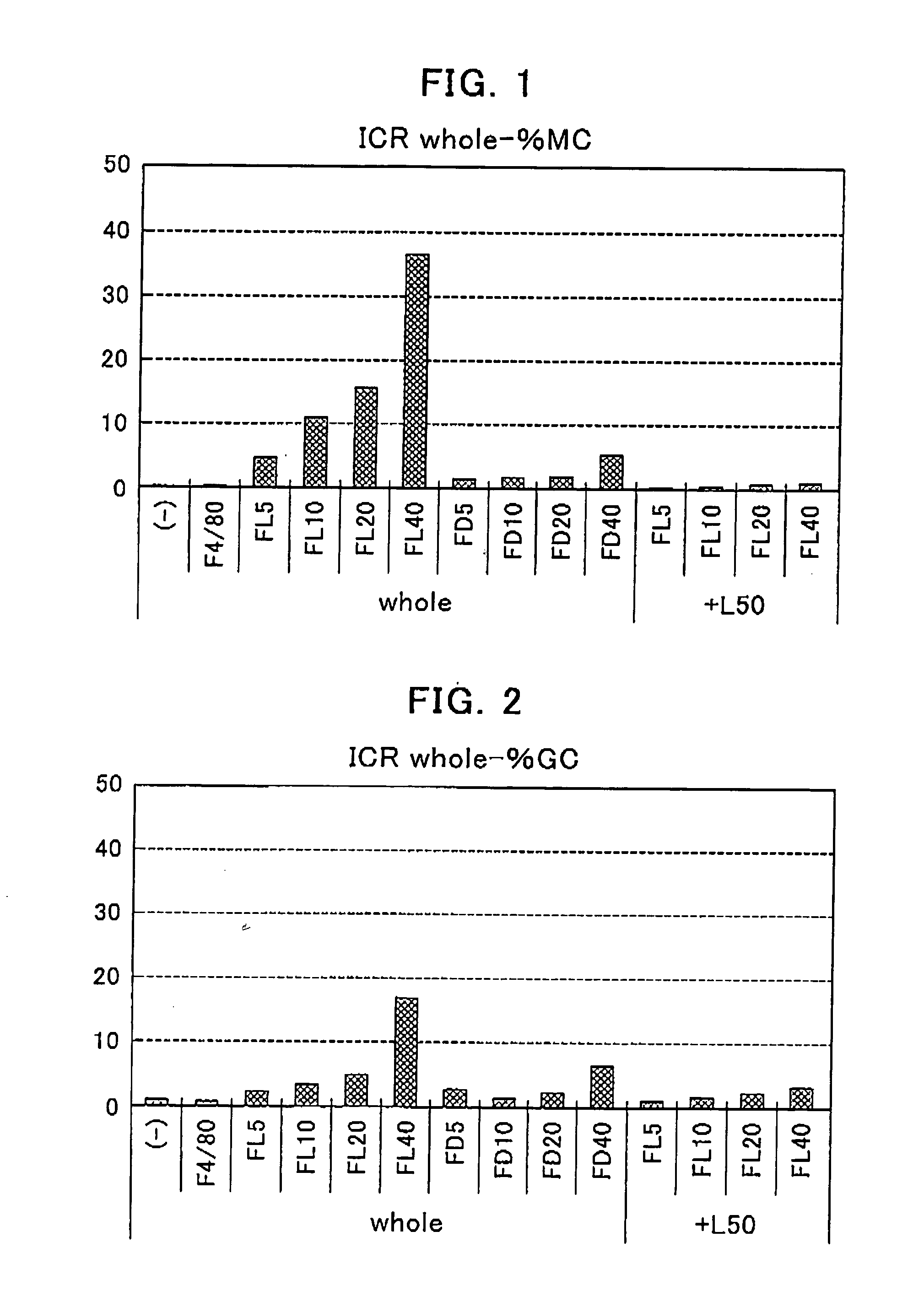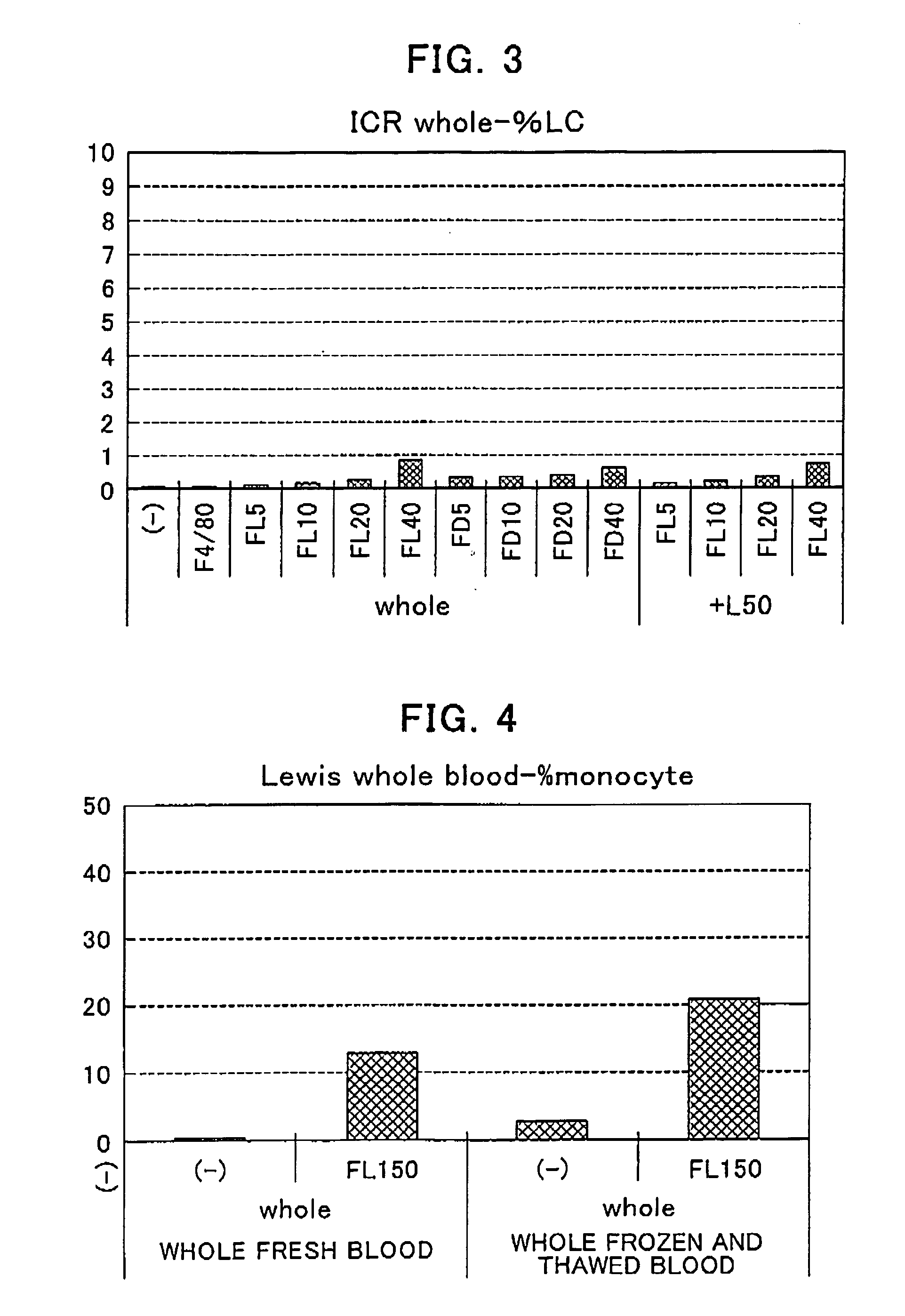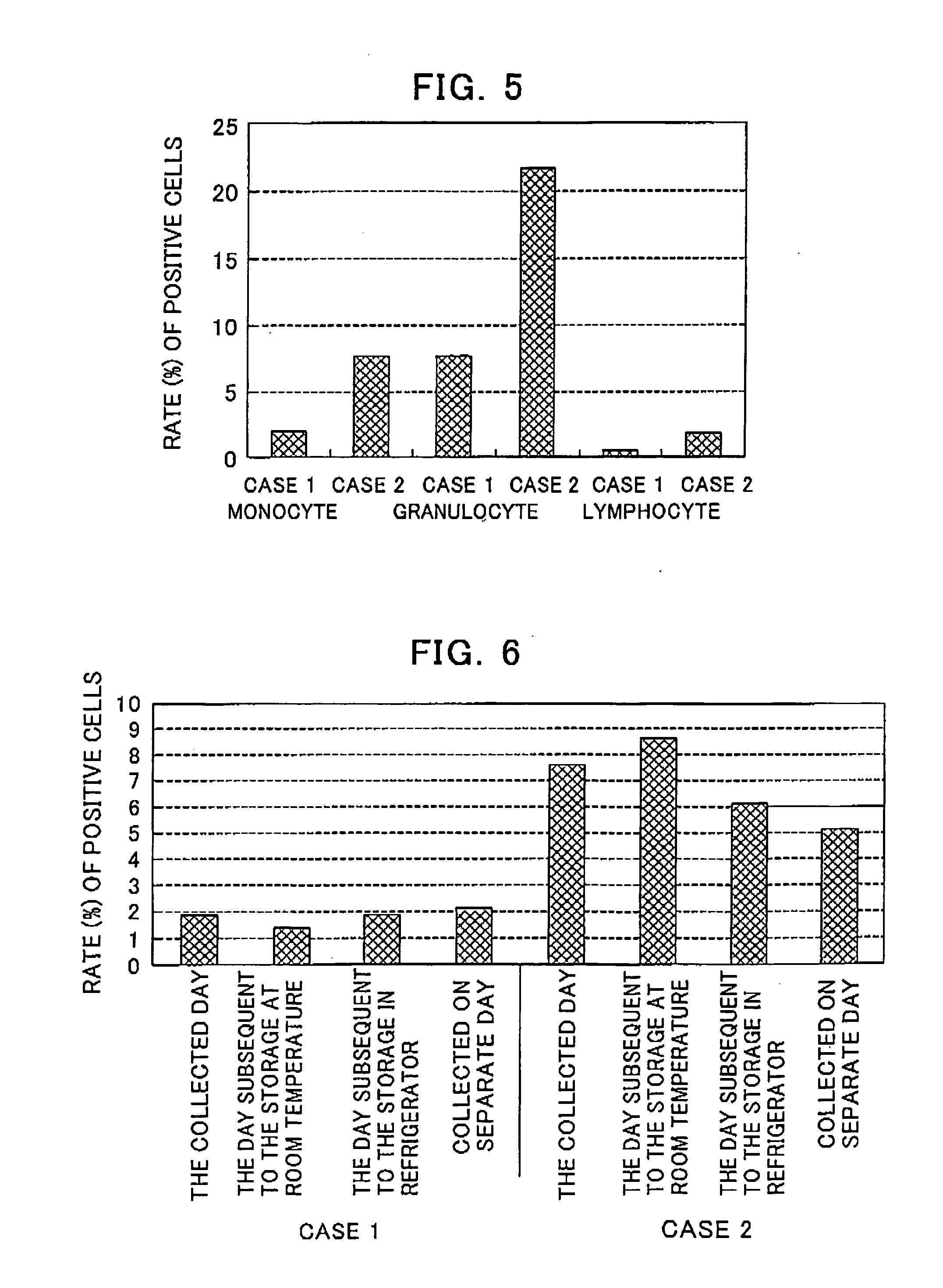Kit for determining polysaccharide-binding ability of mononuclear cells present in peripheral blood
a mononuclear cell and polysaccharide technology, applied in the field of kits for determining the polysaccharide-binding ability of mononuclear cells present in peripheral blood, can solve the problems of difficult constant supply of such an antibody having a uniform titer and requires complicated operations, and achieves the effect of improving or improving precision
- Summary
- Abstract
- Description
- Claims
- Application Information
AI Technical Summary
Benefits of technology
Problems solved by technology
Method used
Image
Examples
example 1
Method for the Preparation of Fluorescein-Labeled Lentinan
[0064] Lentinan (a product available from Ajinomoto Co., Ltd.) was dispersed in distilled water, while kneading the same in a mortal and lentinan was dissolved by treating the resulting dispersion in an autoclave maintained at 120° C. for 20 minutes to thus obtain a solution used in the following steps.
[0065] The solution of lentinan (4 mg / mL) was mixed with the same volume of a 4 mM sodium metaperiodate solution and then the resulting mixture was stirred at 4° C. over a whole day and night (reactive groups: —CHO were introduced through an oxidative cleavage reaction). Then ethylene glycol was added to the reaction system in an amount of 1 / 60 time the whole volume of the system to thus inactivate the metaperiodic acid present therein and then the resulting reaction system was dialyzed against distilled water at 4° C. over a whole day and night. To the liquid thus recovered, there was added a 200 μg / mL solution of fluorescei...
example 2
Method for Determining Binding Ability Using Human Blood
[0077] The human blood collected using a heparin-containing blood-collection tube was dispensed into tubes in an amount of 250 μL / tube, while the same fluorescein-labeled lentinan used in Example 1 was likewise added to each tube such that the concentration thereof was equal to 100 μg / mL. After the cultivation thereof at 37° C. for 45 minutes, there was added, to each tube, a PE-labeled antibody against human CD14 (available from Caltag Company) and after the additional cultivation of the resulting mixture 37° C. for 30 minutes, there was added, to each tube, a 0.83% ammonium chloride solution (containing 0.1% sodium hydrogen carbonate and 0.0037% EDTA·4Na) in an amount of 10 mL / tube to thus carry out hemolysis. After the centrifugation of these tubes at 1500 rpm and room temperature for 5 minutes, the resulting residues were washed with a washing buffer (PBS(−)+0.2% BSA+0.1% sodium azide), suspended in 0.5 mL of the washing b...
example 3
Investigation of Dependency on Difference in Mouse Strain
[0087] The blood samples were collected through the hearts of ICR mice (4 to 6-week-old female mice purchased from CLEA Japan, Inc.), a BALB / c mouse (11 to 13-week-old female mice purchased from CHARLES RIVER JAPAN INC.), a C57BL / 6 mouse (10 to 11-week-old male mice purchased from CLEA Japan, Inc.), a C3H / HeN mouse, C3H / HeJ mouse (6 to 8-week-old female mice purchased from CLEA Japan, Inc.) under the anesthetization with ether using heparin-containing syringes. The measurement was carried out three times for each mouse. Each heparin-treated blood sample was dispensed into Falcon 2054 tubes in an amount of 90 μL / tube under ice-cooled conditions and the fluorescein-labeled lentinan was likewise dispensed into these tubes in an amount of 10 μL / tube. After the elapse of not less than 30 minutes, there was added, to each tube, 3 μL / tube of a PE-labeled antibody against the surface antigen F4 / 80 of the mouse monocyte (PE-labeled an...
PUM
| Property | Measurement | Unit |
|---|---|---|
| Temperature | aaaaa | aaaaa |
| Fluorescence | aaaaa | aaaaa |
Abstract
Description
Claims
Application Information
 Login to View More
Login to View More - R&D
- Intellectual Property
- Life Sciences
- Materials
- Tech Scout
- Unparalleled Data Quality
- Higher Quality Content
- 60% Fewer Hallucinations
Browse by: Latest US Patents, China's latest patents, Technical Efficacy Thesaurus, Application Domain, Technology Topic, Popular Technical Reports.
© 2025 PatSnap. All rights reserved.Legal|Privacy policy|Modern Slavery Act Transparency Statement|Sitemap|About US| Contact US: help@patsnap.com



